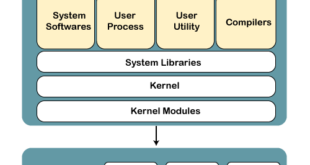Introduction In today’s rapidly evolving world, law enforcement agencies face an increasing need for efficient, data-driven solutions to tackle complex challenges. The law enforcement software market has emerged as a crucial ally, offering innovative tools that empower agencies to better serve and protect their communities. In this article, we’ll delve …
Read More »Unlocking the Power of Photonic Bound States in the Continuum (BICs)
Introduction Photonic Bound States in the Continuum, or BICs, represent a captivating and somewhat enigmatic phenomenon in the world of photonics. These unique waves defy traditional wave behavior by coexisting within a continuous spectrum of radiating waves, challenging our understanding of light-matter interactions. While their theoretical foundations were laid nearly …
Read More »Gallium Nitride (GaN) and Silicon Carbide (SiC): Powering the Revolution in Aircraft Electrification
Introduction The aviation industry is undergoing a remarkable transformation towards more sustainable and technologically advanced aircraft. This shift is particularly evident in the development of future hybrid-powered aircraft and full-electric urban air vehicles (UAVs). At the heart of this revolution lies the groundbreaking potential of Gallium Nitride (GaN) and Silicon …
Read More »Exploring the World of Linux Operating Systems: Versatile, Open Source, and Secure
Introduction In the dynamic landscape of operating systems, Linux stands as a resilient and influential force. Born from the passion of Linus Torvalds in 1991, Linux has since grown into a diverse and robust ecosystem of operating systems that continue to shape the technology world. In this article, we will …
Read More »Cryogenic Electronics: Unlocking the Frozen Frontiers of Technology
Introduction In the ever-evolving landscape of electronics and technology, one field that’s pushing the boundaries of what’s possible is cryogenic electronics or cryoelectronics. Cryogenic electronics, often referred to as cryoelectronics, is a fascinating field that explores the effects of extreme cold temperatures on electronic devices and components. Some specialized applications, …
Read More »Harnessing the Power of Nanomaterials for Future Quantum Technologies
Introduction Quantum technology (QT) has ushered in an era of unprecedented technological advancements, harnessing the peculiar properties of quantum mechanics. Quantum technologies promise to revolutionize computing, communication, and cryptography, offering unprecedented computational power and data security. Key to this revolution is the utilization of nanomaterials—materials engineered at the nanoscale. In …
Read More »DARPA’s Vision: Reimagining Protein Manufacturing (RPM) for a Healthier Future
Introduction Proteins are essential molecules that play a vital role in all aspects of life, from cell signaling to metabolism to immunity. However, the current methods for manufacturing proteins are often inefficient, time-consuming, and expensive. Reimagining Protein Manufacturing (RPM) is a DARPA program that aims to develop new technologies to revolutionize …
Read More »Unlocking the Potential: Optical Metasurfaces Becoming Multifunctional and Tunable
Introduction In the realm of optical engineering, the evolution of metasurfaces has been nothing short of revolutionary. These ultra-thin, two-dimensional structures composed of subwavelength nanostructures have opened up a world of possibilities in manipulating light in unprecedented ways. Initially developed for single-function applications, optical metasurfaces have now taken a giant …
Read More »Microlenses: Miniature Marvels Shaping Our Vision of the Future
Introduction In today’s world, where technological advancements seem boundless, microlenses stand as shining examples of innovation on a miniature scale. These tiny optical wonders, with their incredible precision and versatility, have found their way into a multitude of applications, revolutionizing industries and enhancing our daily lives. In this article, we …
Read More »Navigating the API Usage Landscape: Challenges and AI-Based Solutions
Introduction In today’s digital age, Application Programming Interfaces (APIs) play a pivotal role in connecting various applications and services, enabling data sharing and driving innovation across industries. APIs serve as the digital bridge between organizations and platforms, facilitating seamless data exchange and enhancing user experiences. However, as the usage of …
Read More » International Defense Security & Technology Your trusted Source for News, Research and Analysis
International Defense Security & Technology Your trusted Source for News, Research and Analysis

